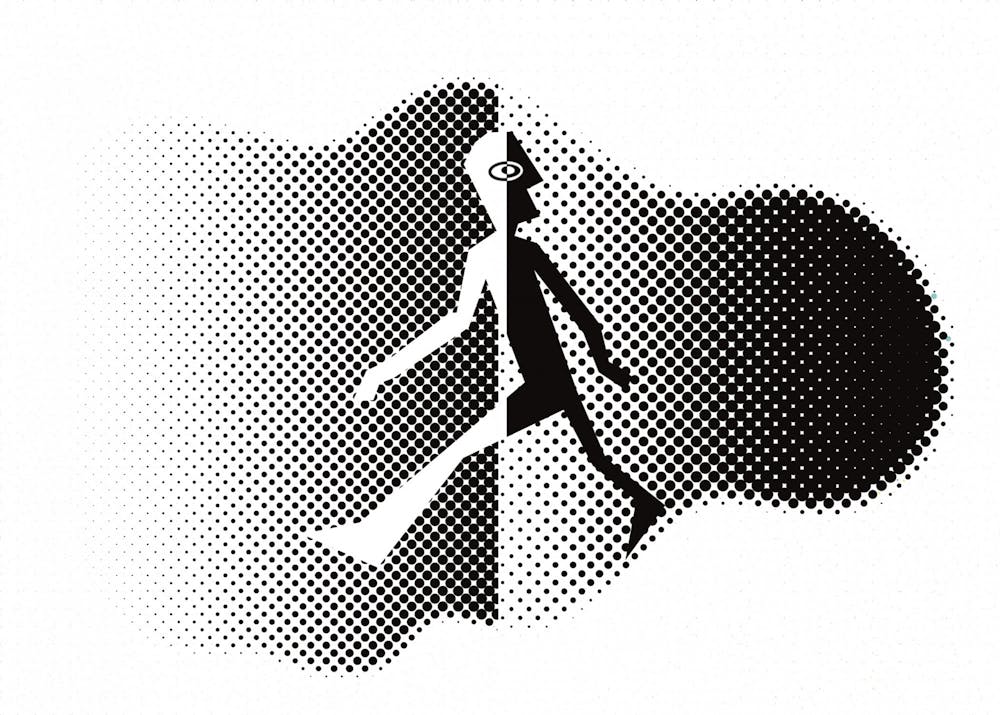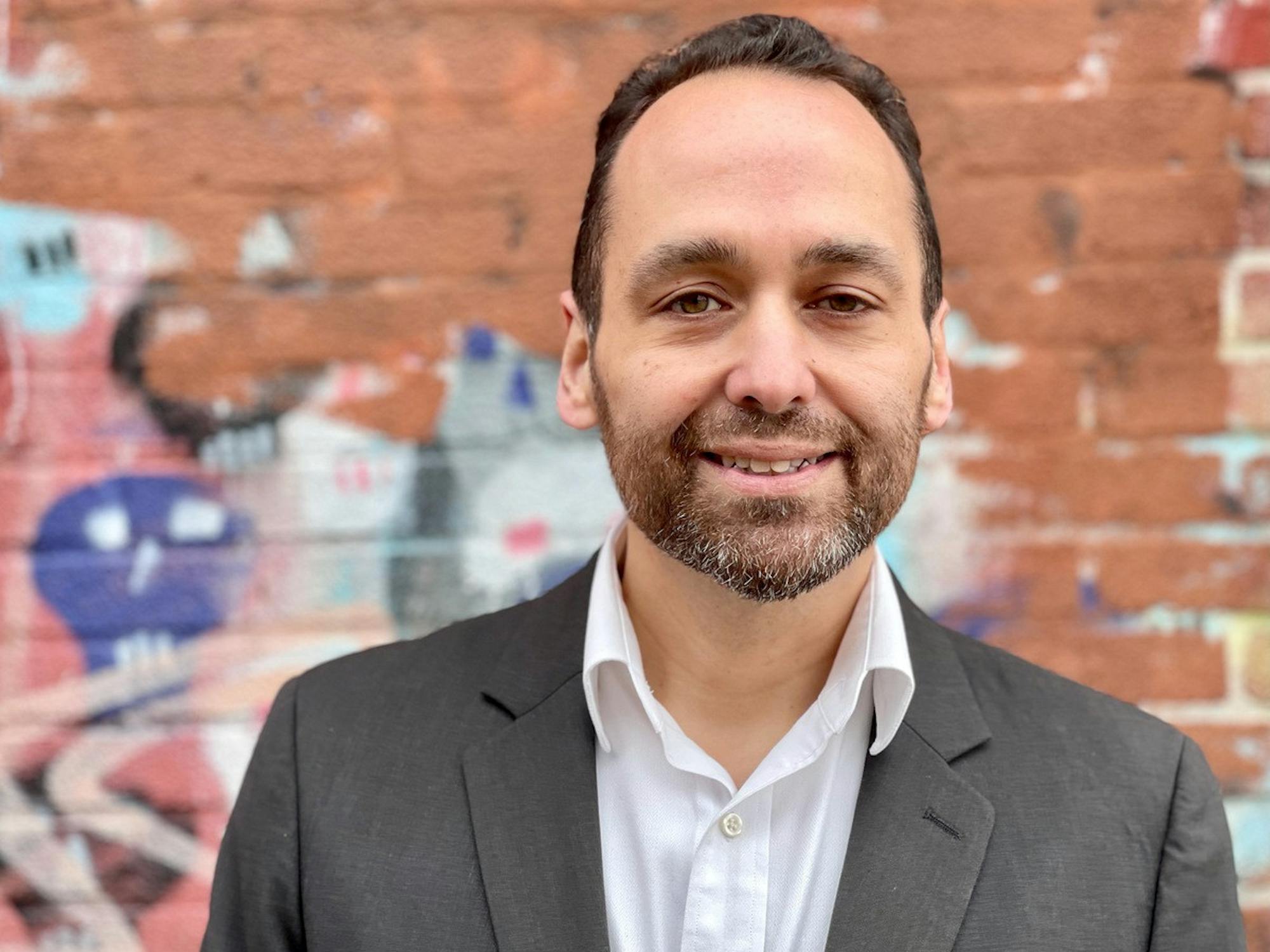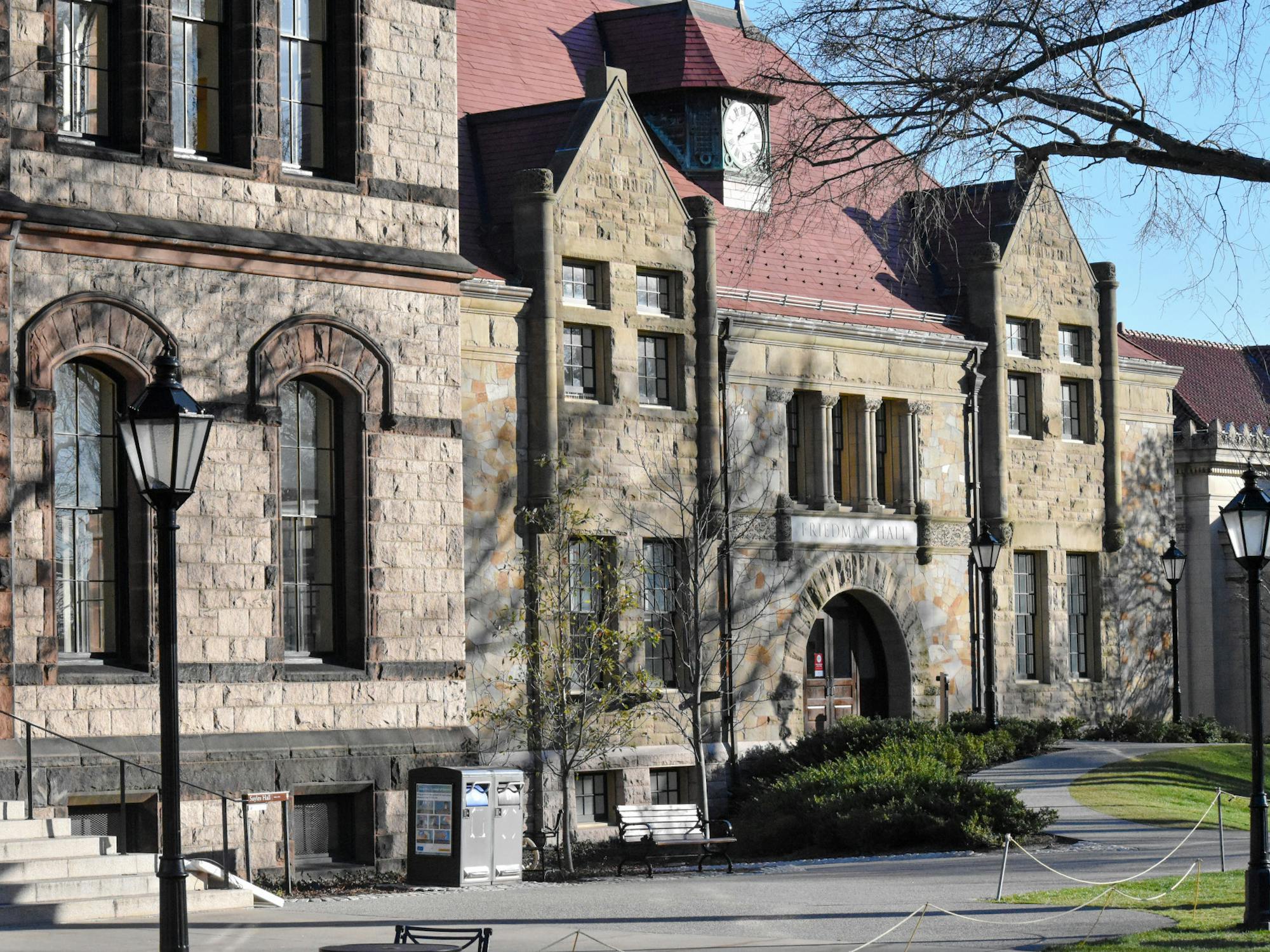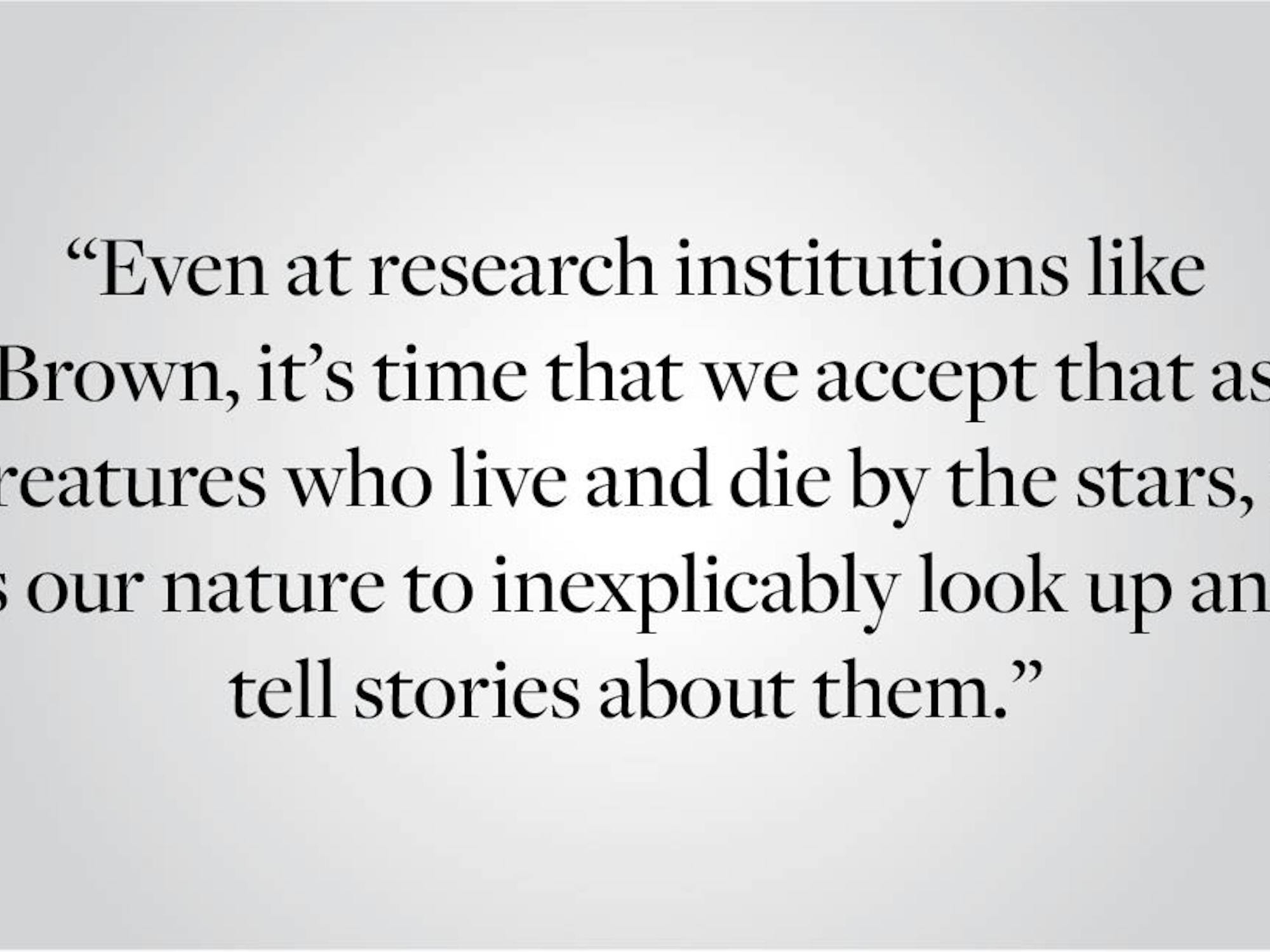I saw this TikTok that said the trip from college back to your hometown is like a “portal between two different worlds.” To me, flying from Brown back home to San Diego, the plane feels like a portal between two different lives. I peer over the sleeping bodies of my fellow passengers out the window and see the faint outline of the coast slowly materialize from the fogginess of the clouds. We sink further, and suddenly I can see the city lights—the tiny cars scurrying about like insects, the miniature houses arranged in perfectly rectangular patterns, their yellow lights fading and reigniting. When I was a little girl, this was my favorite part of the flight, moments before you land—when the world looks like a tiny Lego town.
Within this town of palm trees and diamond-hued water, I live a different life than I do at Brown. I’m not a different person—I remain situated in my same body—yet I inhabit, respond to, and draw from a different external world. At home in San Diego, I’m a daughter, a neighbor, a sister, a little girl who somehow grew up before onlookers had a chance to blink. I’m a homebody. I make oatmeal in specific ceramic bowls; I sleep within the same duvet set that I have for the last five years; I watch The Bachelor on Mondays. I’m the girl behind the front desk of the local yoga studio, the ‘runner’ who stops every five minutes to take pictures of the coast. I look through my portal’s window, at the tiny Lego town—the setting within which this distinct version of myself is very much alive. Her memories, emotions, and experiences remain entrenched within its infrastructure.
I emerge from the portal and hug my mom tighter than I have in a long time. And I am quickly reminded of the abundance that I leave behind while at Brown. My sister looks older than the last time I saw her. My dad is wearing a new lavender golf shirt he bought at a club in South Carolina, apparently. This world lived on; my home lived on despite the loss of what I thought was its integral body. Yet I quickly integrate myself back into its fluctuations—What did I miss? Did we plant a garden? The dogs look so much bigger! It’s as if I was asleep for three months, and am looking at the news for the first time.
Although this world I left behind is anything but stagnant, so many of its pieces still feel the same. Those ceramic bowls somehow still hold the comfort of mid-pandemic oatmeal; my bed is as I left it, its fabric still holding on to the excitement for college, the sadness over lost friendships, or the post-volleyball game exhaustion that rushed through my body as I sat atop its quilted warmth. I re-immerse myself in a world that is ever-changing and alive, yet simultaneously unable to let go of the lives it has taken on before.
I feel inextricably attached to this place, my body tethered to both its past and present despite my distance from it. These intense feelings of attachment to my home, the way in which I mourn the person I am and have been within this place, aren’t just a side effect of homesickness. It turns out that they are a social and psychological phenomenon. “Place attachment” is defined by the University of Washington as a personal identification with a location or landscape on an emotional level, a “person-place bond that evolves from specifiable conditions of place and characteristics of people.” Many researchers think of place attachment as a specific emotional bond to a setting, oftentimes associated with positive feelings, including love, happiness, or pride. But a place attachment can also be characterized by more negative or ambivalent feelings toward the place in question, in cases where it represents more painful or complex memories.
“Place identity,” then, refers to the incorporation of place into one’s larger concept of self. In the words of Royal Roads University’s Leila Scannell and University of Victoria’s Robert Gifford, “who we are can also include where we are.” In this way, it makes sense that I seem to be able to draw distinct lines between who I am in California and who I am in Providence. I am still myself at Brown—but I am no longer a daughter, a neighbor, and a sister that grew up; I am a 19-year-old living alone for the first time. Nobody here knew me as a child—all they know is my body’s present version. I am not dependent, but rather live and breathe remembering the fact that nobody is really here to protect me. In this world, I weirdly go to the MacMillan lecture hall at 9 p.m. to be alone, I eat pineapple with Cheerios, I check in on my friends, and I love wearing scarves. I drink, dance, and love fearlessly, continually resisting the chronic shyness of my youth. Where my body lives has forced me to redefine exactly who I want it to be. I have created multiple place identities: skins I slip into upon arrival at each location.
Yet I am somewhat disillusioned by the fact that, as humans, we work so tirelessly to forge these distinct place attachments and place identities—just to leave that place eventually. Now, I straddle both coasts, so deeply attached to two very different places and the varying identities I inhabit. Every time I grace either world, Brown or San Diego, I do so knowing my time there is temporary, that I have to leave eventually. I go west for break and go back to Brown when classes start again. I am a body constantly on the move, simultaneously pulled toward two opposite coasts. Every time I am in one place, I wish for the other. Yet neither one is really “home” anymore—because any time there is now always finite.
It does seem logical that more mobile individuals tend to have weaker place attachment—that the more one moves, the more futile it seems to attach oneself to every new place, and thus the weaker their place attachment becomes. And some evidence does point to this assumption. According to Scannell and Gifford, some research has suggested that people who move more frequently do have weaker ties to specific places.
However, I almost feel as if I, a mobile body, have abnormally strong place attachment—as if the severance of constantly coming and going somehow tethers me more tightly to each place. Every time I exit a world, I do, in a way, feel more attached to it—I engage so deeply with its abundance that every time it seems more difficult to leave. Accordingly, it turns out that mobility doesn’t always have to undermine place attachment. Rather, my body’s constant movement can actually render it capable of stronger place attachment than it ever could achieve while sedentary. In their 2019 research published in the Journal of Environmental Psychology, Andrés Di Masso et al. argue that mobilities, instead of negating the importance of place in human life, actually “shift our understanding of place and habitual ways we relate to and bond with places.”
It makes some sense. After all, the more we move, the more we appreciate certain aspects of one place, because we experience their absence in others. In Sweden, frequent travelers were found to have had just as strong of an attachment to local communities within which they lived for short periods of time as less frequent travelers. Frequent travelers, in fact, were found to be more involved in community and local issues than non-frequent travelers. In this way, “‘roots’ and ‘routes’ are not always at odds.” By leaving home, I am not severing ties, but rather allowing myself to reflect upon and more deeply appreciate a place to which I will always be inextricably attached.
Historically, social research has often given a kind of moral privilege to sedentary populations. In other words, we have ascribed a certain ‘incivility’ to the hunter-gatherers of our past, who were constantly on the move. This hierarchical thinking helps to explain the confusion and disillusionment that can come when moving today—the belief that someone who moves all the time should find just ‘one place’ to remain, as I, myself, have sometimes considered. Yet this assumption overlooks humans’ long-standing ability to have multiple homes, to develop stronger place attachment the more and more mobile our bodies become. Maybe we were meant to morph and change depending on the specific land atop which we stand. Maybe our hearts were meant to live in multiple different places, all at the same time.
I’m back at Brown now, and there’s a part of me that still mourns the West Coast, that wasn’t ready to slip out of my San Diego skin and back into my (pale) Providence one. The attachment beckoning me back West seems to consume me during certain moments. Yet during others, I feel alive and integrated once again within this second place to which I have become attached. The Colonial-style brick sidewalks still elicit a certain giddiness in my gait. The winter twigs now bear tiny cherry blossoms, and I smile, just as I did standing under their orange autumn leaves just months ago. I guess my heart now lives in two places, just as earnestly in one as it does in the other. So, I fetch my Cheerios and pineapple from the V-Dub. I adjust my scarf, inhale faintly, and step out into this world I have created and embraced as my own.





